Home Gravitational lensing
SimpLens
This is a program for illustrating some of the theoretical ideas important in gravitational lensing in an interactive way.
There used to be a Java applet here, but browsers don't allow those any more. However, you can download the SimpLens.jar file and run it as a standalone program. The SimpLens program is written in literate Java and is free software. |
If all is well you will see three panels. Try clicking a source position on the left panel and see what happens. Or try changing the numbers in the text panels. (You need to press enter for the computer to read the numbers you input.)
The program illustrates a simple lens model. The parameters a,b,h specify an elliptical mass distribution, while g1,g2 refer to external mass. (The precise formulas are given in our paper especially equation 10.) The left panel shows the mass profile and the source position. The middle panel shows the lens lens potential and the image locations. [The yellow curves in these two panels are abstract curves, known as caustics and critical curves, which characterize the lens in terms of catastrophe theory.] The right panel shows images, also indicating their magnifications, and contours of virtual light-travel time.
Image morphologies
Here are images of six lenses, taken from the CASTLeS pages. I have rotated all the images here (for reasons to be explained in a moment) but by clicking on the sources you can see the originals.
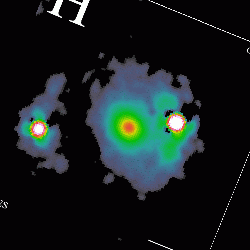 |
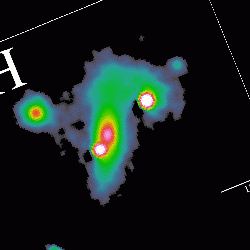 |
||
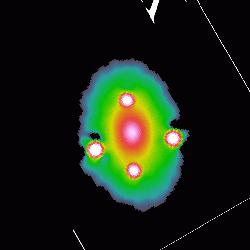 |
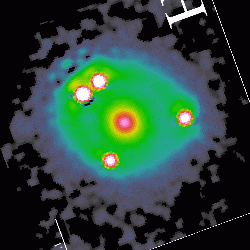 |
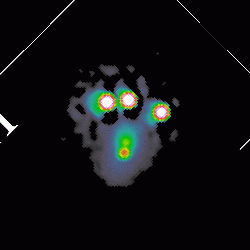 |
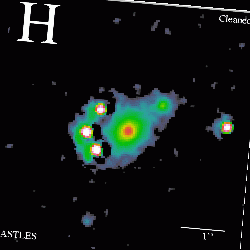 |
It turns out that nearly all lensed quasars have an image morphology resembling one of these six examples, up to a rotation and reflections. The reason is that the image-configuration depends mainly on the source position. See if you can reproduce all six image configurations by choosing suitable source positions.
The base model is a simple model of PG1115+080. You can try some variant models with the selector, or change the parameters directly.
You can see how external shear (meaning a lensing galaxy outside the window) tends to `shear' the image configuration as well. Also that you can make a lens profile shallower or steeper with hardly any change in the image positions, only total magnification affected.
Extra lens components
The initial model represents B1422+231. As well as varying the parameters, you can add an extra isothermal lens of Einstein radius r centred at (x,y). The coordinates in the left panel range from -1 to +1.